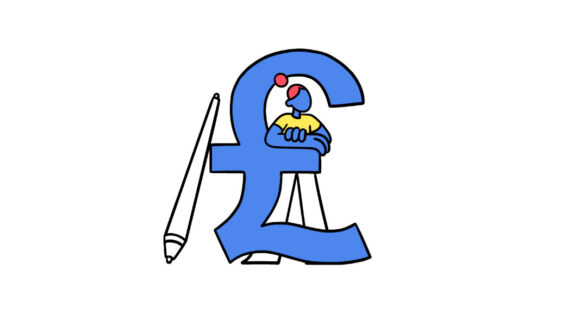

She Drew That 2023 Animation Salary Report Confirms Men Are Making More Than Their Female Counterparts
U.K. animation org She Drew That released its second annual Salary Report, a snapshot of salary data reported by animation workers in the territory.
The survey asked members of the U.K. industry questions about gender, work roles, seniority, salaries, and the industry at large. Data was collected between October and December of 2023 from 504 participants. That’s nearly a three-fold increase over last year’s 171 participants.
Cartoon Brew spoke with She Drew That founder Hannah Lau-Walker about the importance of the survey and how its results can be utilized to level the playing field in the region’s animation industry:
The overall aim of the survey is to throw light on salary and pay to support more discussion by people in the animation industry. Putting out a resource like this feels like a way that we can make that happen. Salaries can be so mysterious, especially when you start out in the industry or move into different sectors, and with more and more people working remotely, we don’t have the opportunity to discuss these things with co-workers over a tea break or an after-work pint. We hope that putting this report out there will start those conversations, help us all open up about money, and be used when negotiating new salaries to ensure no one is left in the dark about what they could be earning.
Here is a breakdown of the 2023 She Drew That Salary Report results. Detailed data, including specific salary information for nearly 70 animation jobs in the U.K., can be found in the organization’s full report, available here.
Respondents:
- 293 identified as female (58%)
- 182 identified as male (%36%)
- 21 identified as non-binary (%4%)
- 8 chose not to disclose their gender (2%)
- The average age of respondents was 32, ranging from 20 to 55
- The average work experience was 7.9 years, with a range of less than one year up to 38 years.
Results
- The survey included salary data for 68 positions within the animation industry
- 48% of participants regarded their salary as fair
- 43% felt they were not being fairly compensated
- 9% shared only the data and not their opinion
- 56% had received an increase in salary from the previous year
- 34% were receiving the same compensation as the previous year
- 10% saw their salary decrease from the previous year
Analysis
Although the survey is only in its second year, patterns can be found in the collected data. For instance, although there are some occasions where women workers are paid more than their male counterparts, a demonstrable trend shows that, on average, male workers are paid more than their female counterparts, especially those in more senior roles.
However, unsurprisingly, an even stronger correlation can be found between age and experience and compensation. Survey data suggests that the higher the number of years of experience the higher of the day rate and annual salary earned. The results also suggest that years of experience has a strong relationship for day rate and a moderate relationship with annual salary.
Anyone in the animation industry will be familiar with anecdotes about women being paid less than their male counterparts for the same job. What shocked She Drew That organizers was seeing the raw data back up those stories. According to Lau-Walker:
Whilst there are examples of women being paid more than their male counterparts, there is a pronounced tendency across the industry for men to be paid more than women. It just goes to show there’s more work to be done and that, if anything, it’s great to have evidence of the problem. It gives us somewhere to start.
The report argues that “the need to be capable of effective negotiation is felt more keenly than ever, every time new work is entered into – and while this is less frequent for salaried staff it is very frequent for day rate employees. Respondents in all pay contexts felt that negotiation skills are crucial in this industry to secure a pay rate that feels fair and reflects their skills and ability”
Recommendations
She Drew that put together a list of four recommendations based on the results of this year’s survey:
- To continue the survey next year to provide real time salary data for UK animation workers.
- University animation courses need to reflect the importance of negotiating skills in their curriculum to better prepare animators to obtain appropriate pay in the industry.
- Some animators could benefit from the availability of negotiating skill training or toolkit to support their pursuit of fair pay.
- More studios/employers need to recognise the benefits of developing good relationships and trust with animators when negotiating pay.
Future Surveys
The annual survey is a tool meant to facilitate not just the work done by She Drew That, but by all animation organizations across the U.K. The goal is to continue to grow the pool of participants each year, providing more conclusive and valuable data that can be used to make actionable plans to improve pay parody between workers of different genders.
She Drew That posts the call for respondents on its social media platforms and approaches studios and industry leaders across the U.K. to disperse surveys across their networks.
More on She Drew That
She Drew That was founded in 2019 by Lau-Walker, a former freelance animator who has worked for several London animation studios and recently transitioned to lead animator. After noticing a clear gender gap at both junior and senior levels, she worked to create a supportive and developmental community to help female animators, which later became She Drew That.
In addition to its annual Salary Report, the organization hosts several networking events, talks, and panels featuring industry leaders from across the U.K.


